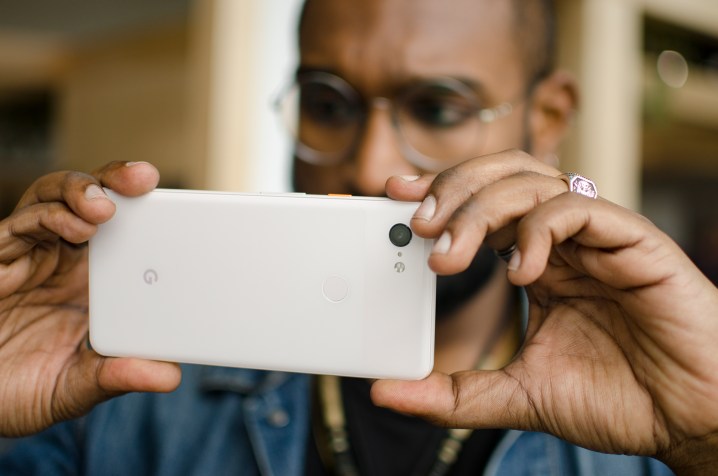
Google’s Pixel 3 and Pixel 3 XL smartphones take amazing photographs, but a new feature launching today radically improves low-light pictures. It’s called Night Sight, and it uses artificial intelligence and the Pixel’s HDR+ processing to dramatically boost colors and brightness for photos captured in very dark environments.
Night Sight is a new mode in the camera app (it’s hidden in the the More section in the camera app), but a pop-up suggestion to use it will appear above your shutter button if the camera detects a dark environment. When you take a photo with Night Sight, you’ll have to stay still for a few seconds, as this mode captures more photographs than usual. Think of it as high-dynamic-range (HDR) but for night photography.
The results are impressive, but we should mention some key points. Night Sight really is meant to be used in ultra-low-light conditions. In a variety of nighttime situations, the standard Pixel 3 camera holds up well, and it might deliver a more pleasing photo. Night Sight photos can sometimes look unnaturally colorful, so it really isn’t meant to be used in well-lit conditions.
Night Sight really is meant to be used in ultra-low-light conditions.
Night Sight also isn’t ideal for moving objects: Since the camera is capturing a long exposure and combining multiple photos together, it’s better to use for still landscapes, posed pictures, or even selfies (it works with the front or rear camera), rather than motion. During testing we noticed Night Sight would often try to white balance photos aggressively, which can sometimes strip away the ambiance or mood of the image. That being said, Night Sight photos can look sharper and less grainy, and that alone can be a reason to ignore the white balance.
And one final note: Night Sight doesn’t offer much if you try to use it in daylight. Your photos will end up looking exactly like the photos captured by the standard camera, unlike Huawei’s Night mode, which can help improve HDR on daylight photos.
Here are a handful of pictures taken with the Pixel 3 comparing Night Sight to the standard camera:
You may find yourself liking some of the photos captured by the standard camera over Night Sight, and that’s perfectly fine. There are a few photos we’re quite fond of, though, that were captured with the A.I. feature. The image of the scooter, for example, is much brighter than the non-Night Sight photo. We also are happy with the outdoor selfie, which boosted the brightness a little and tweaked the color to be less yellow. Two of our favorites are the one with the sign that reads “134th street,” and the photo of the leaf-covered park path with benches. The standard photos for these two are quite dark, and we’re happy with the A.I.’s results in boosting some colors and brightening up the images.
But perhaps the best example of when you’ll want to use Night Sight is from the selfie photo below. The standard image will show you just how pitch-black it was inside the apartment, and the Night Sight photo almost looks as though a flash was used. It’s simply amazing. Sure, the image is grainy, but it’s still detailed and colorful enough to be something we’d share. This is also one of the few night modes in a smartphone camera we’ve seen that works on the front-facing camera.
Night Sight allows you to see in the dark, and as we’ve said, you’ll want to rely on it mostly in ultra-dark conditions for the best results — and it really will impress. At other times, you’ll be more than satisfied with photos from the Pixel 3’s standard camera.
Night Sight is available as an update to the Google Camera app in the Google Play Store, and it’s available for the Pixel 3 and 3 XL, Pixel 2 and 2 XL, as well as the original Pixel and Pixel XL.
Editors' Recommendations
- The Pixel Watch 2 just got a feature it should have launched with
- Google Pixel 4’s astrophotography mode is now rolling out to older Pixels
- Pixel 4’s Live Caption feature will come to the Pixel 3 line by year’s end
- OnePlus 7 Pro vs. Pixel 3a vs. ZenFone 6 vs. Samsung Galaxy A50: Camera shootout
- Which budget phone has the best camera? We tested four to find the answer




















